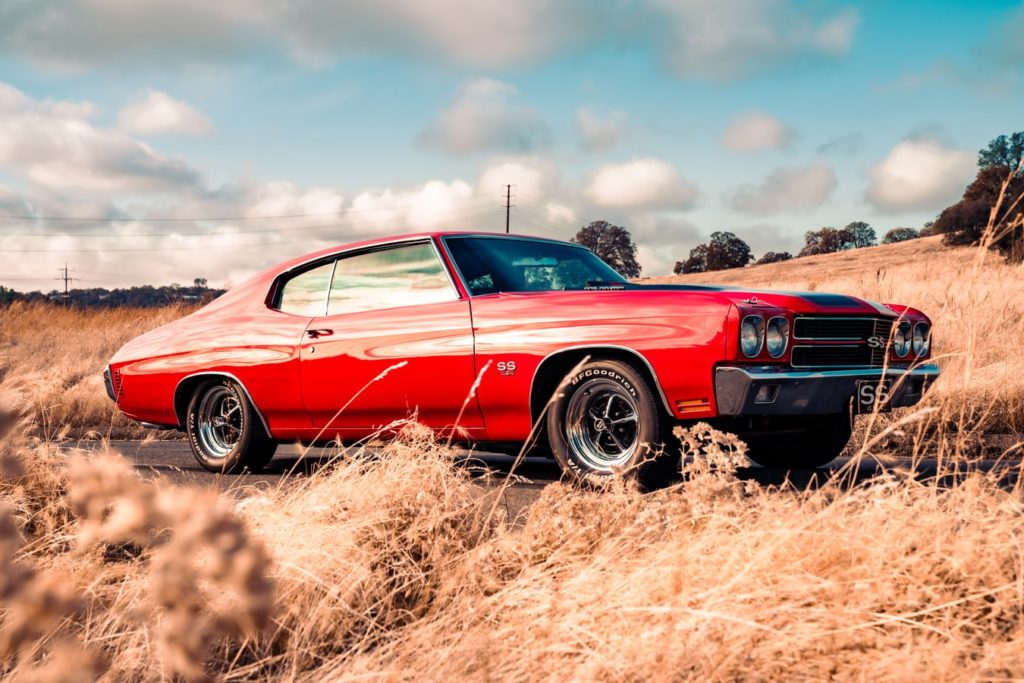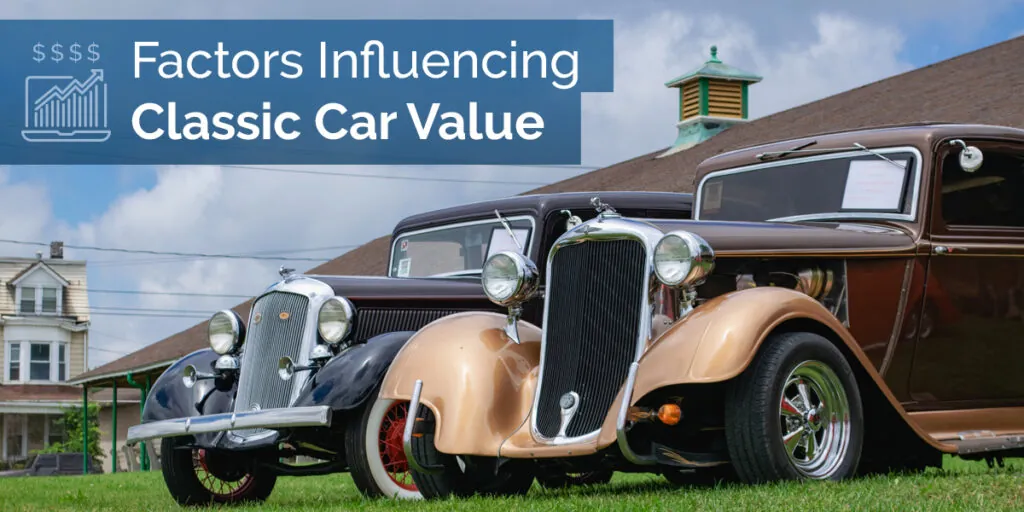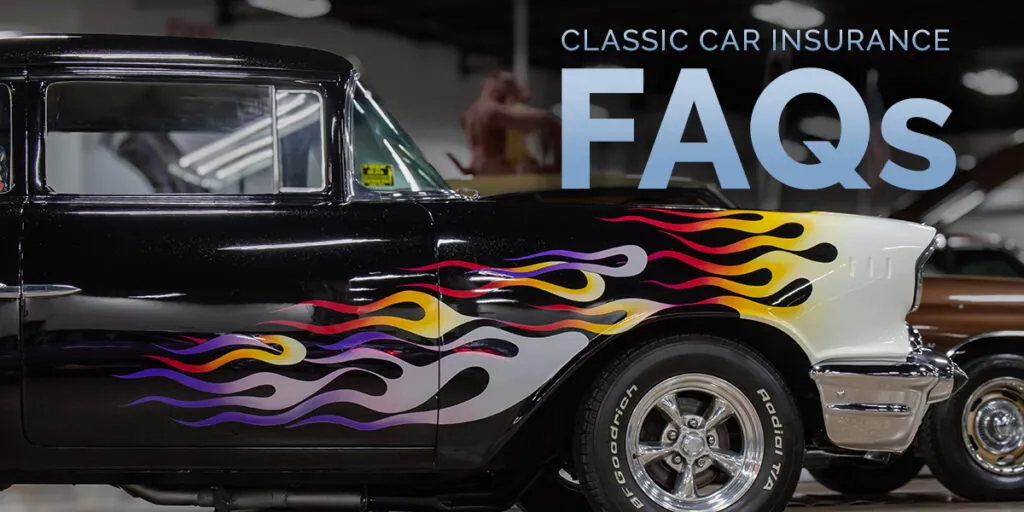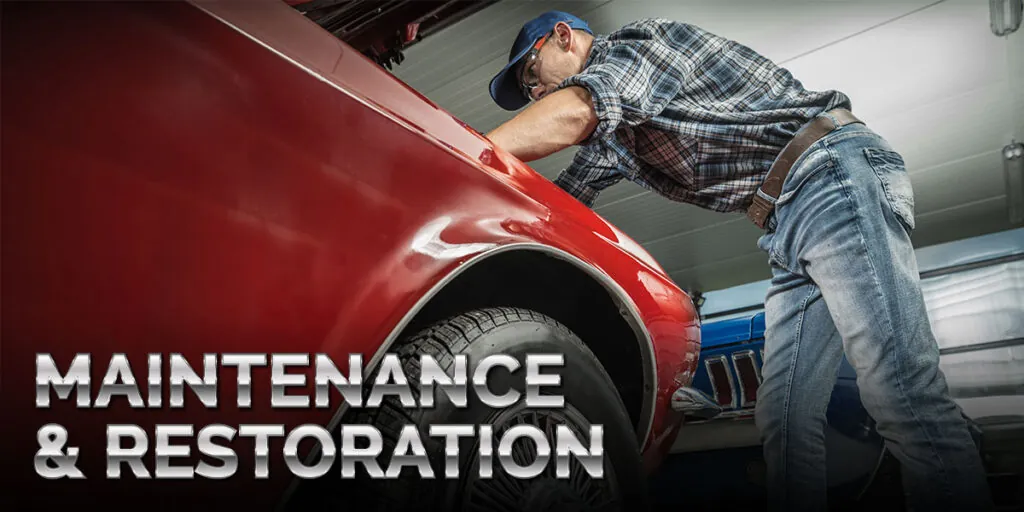1970 Chevelle SS, Source: Unsplash
Classic Chevrolet muscle cars are known for their big motors that owned the drag strips and racetracks of the 1960s and 1970s. Since then, they’ve become popular collectors cars for both those who focus on pristine, classic Chevy cars, and those who like to restore a project car to its former glory. If you live for the smell of smoking rubber and the roar of loud motors screaming down the track, Chevy muscle cars hold as big of a place in your heart as they do ours. Let’s take a look at the history behind these classic cars.
Classic Chevy Cars from the 1950’s
In the wake of World War II and the Korean War, America’s auto industry was operating at peak capacity. Gasoline was cheap and returning soldiers yearned for wide-open spaces, contributing to the rise of car-friendly suburbs. The nascent car culture in America that had been slowly taking root before the wars exploded in the 1950s. At the center of it all was Chevrolet.
Throughout the 1950’s General Motors and Chevrolet released two car models that really made an impact – both of which you can find models that are still around today. These included:
- The Corvette
- The Chevy Impala
First Generation (C1) Corvette Convertible, Source: Unsplash
The First Generation Corvette (1953-1962)
Up until this point, Chevrolet cars were known for their low price point and reliability. They had no car model that was considered exciting and fast – until the release of the first Corvette.
Billed as a sports car, the first year’s run consisted of hand-built corvettes sporting a 150hp inline V6 motor dubbed the Blue Flame. A few years later, Chevy became the first manufacturer to offer a V8 engine that achieved at least 1-horsepower per cubic-inch of displacement, kicking off America’s passion for Chevy muscle cars and vehicles that pushed the envelope for performance. Powered by a 283 cubic-inch V8 motor, the Corvette offered race performance you could take on the road.
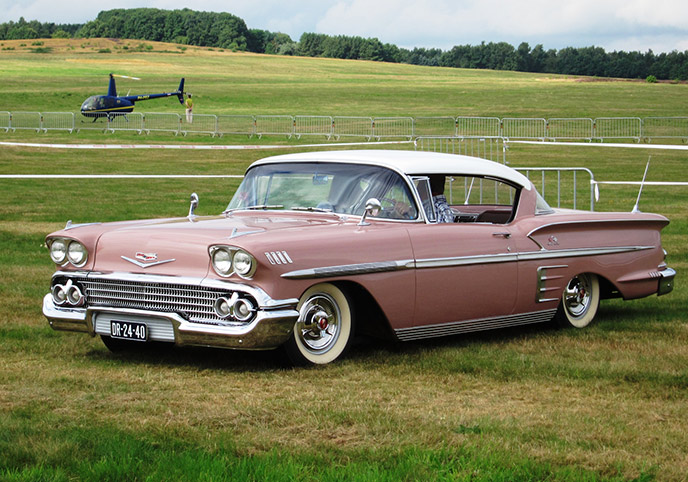
Two-door 1957 Impala, Source: Wikimedia Commons
The Chevy Impala (1957-2020)
While the Chevy Impala was not nearly as exciting as the release of the Corvette, it gave Chevy the chance to reach both casual car owners and sports car lovers. With the option to be a 4-door or a coupe and a hardtop or soft top, it offered both versatility and speed.
The first generation was powered by a 283 cu. In. motor or an optional 348 cu. In. V8 delivering over 335 hp. This turned an otherwise pedestrian full-size car into a road machine that could deliver some eye-opening speed of its own. With continual runs from late 1957 through 1985, 1994-1996, and 2000-2020, the Impala was one of Chevrolet’s most popular and iconic passenger cars.
Classic Chevy Cars from the 1960’s
Leading into the 1960’s, Chevy started to manufacture more models and continue to advance their muscle car catalog. Throughout the decade, Chevy introduced four new cars to their lineup. They aimed to continually dominate the American car market with these new models:
- The Corvette Stingray
- The Nova
- The Chevelle
- The Camaro
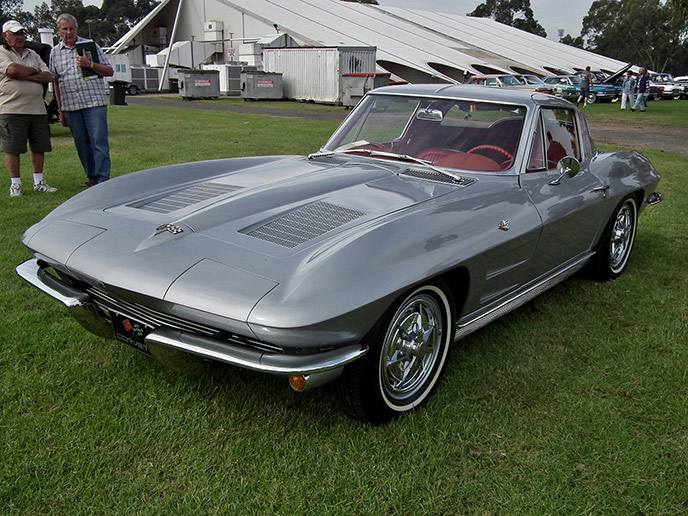
The Corvette Stingray (1963-1967)
1963 Corvette Stingray, Source: Wikimedia Commons
By the time the 1960s rolled around, the Corvette was regarded as one of the top vehicles coupling speed and power, with engines that delivered nearly 300hp. It’s early 1960s redesign into the now-familiar Corvette Stingray, with its curves reminiscent of a euro racer made it one of the most sought after cars on the road, but it also came with a price tag that put the speedy vehicle out of range for many customers.
However, with a new Corvette release, Chevy was able to continually dominate the sports car industry in America. The new model was faster, more exciting version of the popular first generation Corvette from the 1950’s.
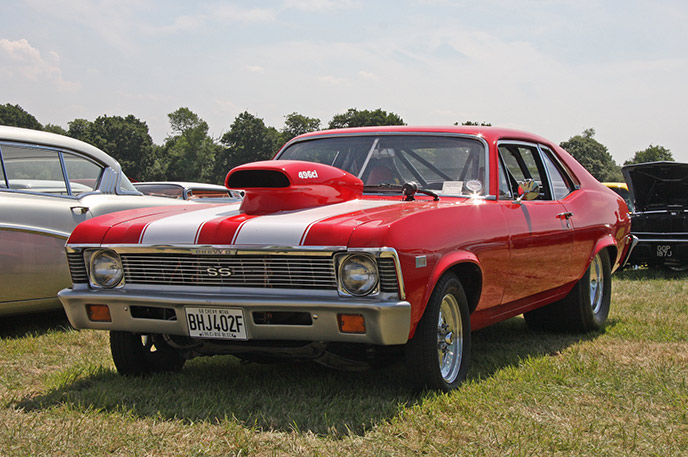
1968 Chevy Nova SS, Source: Wikimedia Commons
The Nova (1962-1979, 1985-1988)
Along with demand for powerful muscle cars, American drivers were also seeking more economical, but robust compacts. To meet these needs, Chevrolet decided to release the Chevy II – which is more commonly known as the “Nova.” This model was a 1962 replacement for the previously popular Chevy Corvair.
For the most part, the Nova was a reliable compact on par with other GM counterparts such as the Buick Apollo, Oldsmobile Omega, and Pontiac Ventura. However, the third generation (1968-1974) produced the Nova SS (Super Sport,) billed as one of the smallest muscle cars to come out of Detroit.
The Nova SS was sold with optional V8 engines. Drivers could choose between the big-block 396 cu in (6.5 L) rated at 350 bhp (350 PS; 260 kW); or 375 bhp (380 PS; 280 kW) at 5600 rpm and 415 lb⋅ft (563 N⋅m) at 3600 rpm of torque.
1970 Chevelle SS, Source: Unsplash
The Chevelle (1963-1978)
To bridge the gap between the Impala and the Nova, Chevrolet also released the Chevelle. This mid-size model was released to keep up with the Ford Fairlane, but when Chevy released its Super Sport Chevelle, it soon outdistanced its competition and set in motion a wave of changes for Chevy muscle cars.
As its design was fine-tuned with fastback lines and squared-off corners, most of Chevrolet’s other vehicles followed suit. The mid-decade releases of the Nova, Impala, and Chevelle all featured these new, more aerodynamic lines, but they were also joined by one of the finest muscle cars Chevy created, the Camaro.
Along with the signature SS, the Chevelle was available in a range of badge packages associated with different trim levels and body styles. There was the Base 300 series in 1964 and 1965, also available in a wagon. The wagons were also sold with exclusive Deluxe and “Greenbrier” name plates previously used for the Corvair.
Then, there was the Malibu SS in 1965, which featured its badge on the rear quarter panel. The second generation (1968-1972) featured new luxury badges such as the Concours, available as a 4-door sedan, a 4-door sport sedan, or a hardtop coupe. During this generation, Chevrolet also introduced the Malibu, a top-line subseries of the Chevelle. The Malibu was available in a full-range of body styles, and interiors were considered a bit more plush than the standard Chevelles. The Malibu would eventually become a Chevrolet stalwart in its own right, encompassing nine generations that continue to this day, with the most recent Malibu generation released in 2016.
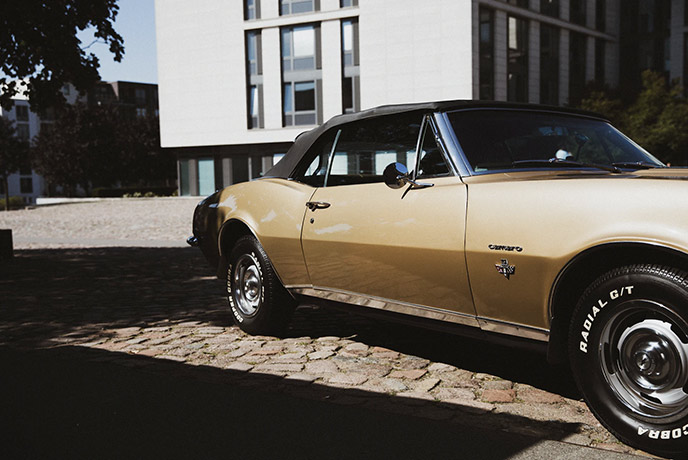
1967 Camaro, Source: Unsplash
The Camaro (1967-Present)
Built to compete against Ford’s immensely popular Mustang, the Camaro actually had the same rear-drive, front-engine configuration found in the Mustang. The Chevrolet Camaro gave drivers a great-looking car with a range of engine choices to provide as much power as they were comfortable with. Already offered in Rally Sport and Super Sport configurations, the addition of the Z28 late in the first year of production made no bones about its purpose, with wide racing stripes , features intended to look more like a racing machine, and a powerful 302 cu. in. V8.
Classic Chevy Cars from the 1970’s
The 1970’s started out huge for Chevy muscle cars. Top American competitors like Ford and Dodge were focusing on racetrack vehicles, while Chevy focused more on the everyday consumer. The mid 1960’s to early 70’s had redesigns for popular models like the Chevrolet Impala, Nova, and Chevelle. In addition, the Chevrolet Camaro stayed popular throughout this decade.
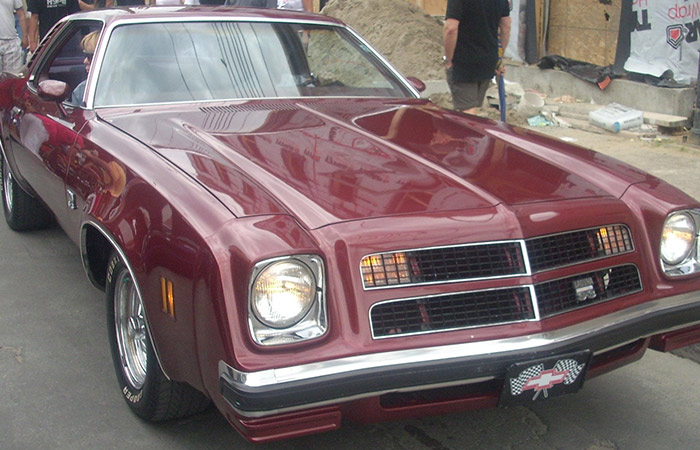
1976 Chevelle Laguna Coupe, Source: Wikimedia Commons
However, the Clean Air Act of 1970 made the high-octane fuel needed by high-compression motors less common and more expensive. Then the oil crisis of 1973, kicked off by an oil export embargo from OPEC, led to nationwide fuel shortages and rationing. Muscle cars became expensive to own and were largely seen as wasteful due to their low fuel economy and high carbon emissions. While the Corvette, Impala, and Camaro weathered the storm, other badges, like the Nova and Chevelle, would not last the decade. In addition to the brand’s classic mainstays, there were two new models released throughout this decade including:
- The Monte Carlo
- The Caprice
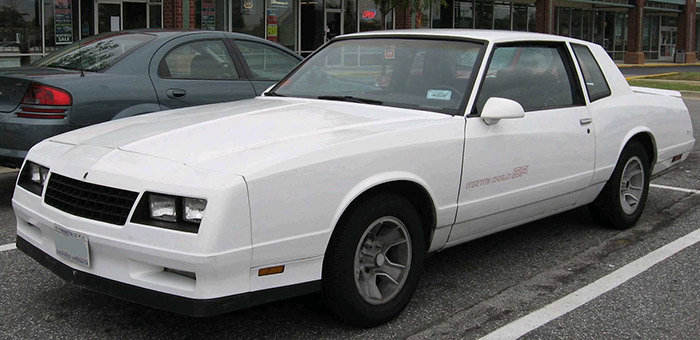
1983 Monte Carlo SS, Source: Wikimedia Commons
The Redesigned Chevy Monte Carlo & Caprice
The 1970’s started off strong with the release of the Chevy Monte Carlo and Caprice. They offered a versatile line for both gearheads and family cars. You could find these cars with either a manual or automatic transmission. Additionally, these cars were heavily customizable and easy to make your own.
These two models were ideal for those that wanted to stray away from the traditional muscle car look. They took away the shiny grilles and loud motors to make a more family friendly car. However, they still had the same power of the Chevy Camaro.
Protect Your Classic Chevy
You’ve put the money and time into your Chevy muscle cars, make sure that passion is protected with a classic car insurance policy that can help you replace or restore your vehicle if the worst happens. Our collector specialists share your love for the growl of a big block and the roar of the strip. Contact American Collectors Insurance for a free quote tailored to your needs today. Show off your favorite Chevy muscle to our community. Let us see what you’re running below.
